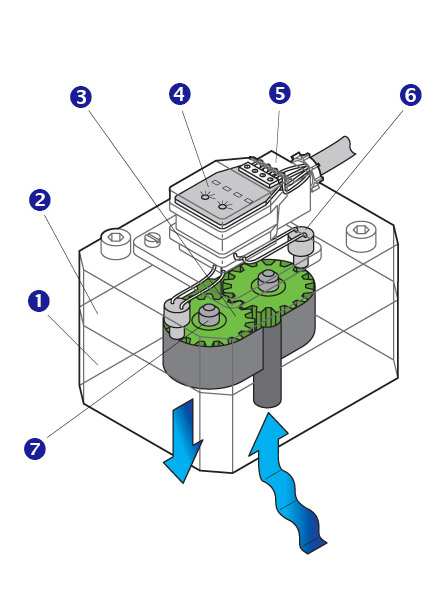How Does a Positive Displacement Flow Sensor Work?


Let's make this really simple for ourselves. The positive displacement flow sensor has a measuring chamber with two holes. Something goes into one hole, something comes out of the other.
In principle, a positive displacement flow meter is an inverted gear pump. In the case of a gear pump, a volumetric flow is generated by the movement of the gear wheels; in the case of the positive displacement flow meter, it is the other way around.
The volumetric flow thus drives the gears. In this case, the fluid in the spaces between the gear teeth moves with the wheels on the outside to the other side of the measuring chamber (see figure). Where the toothing engages one another, the liquid is displaced. That is why we are talking about the principle of displacement. The speed is recorded with Hall effect sensors.

➊ Housing bottom
➋ Housing cover
➌ Gear wheels
➍ Pre-amplifier
➏ Hall-Effekt sensors
➐ Bearing
Since the spaces between the teeth represent defined volumes, the volumetric flow can be inferred via the rotational speed of the gears. This is also the reason for the substantial advantage, namely the high measuring accuracy without sensor drift. The devices are particularly suitable for viscous liquids (high viscosity), such as oils, for example, but also for the measurement of aqueous media.
Did you know? The positive displacement flow sensors of series VZ from SIKA now withstand even higher pressures. Depending on the size, these are now up to 480 bar for VZGG and VZVA and up to 240 bar for VZAL.